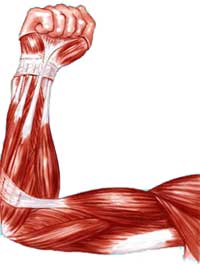 Artificial muscle bundles created in laboratories are reported to be 100 times stronger than real muscle, according to a recent study. These two types of super-strong artificial muscles can convert chemical energy into mechanical energy, allowing them to function like real muscles.
Artificial muscle bundles created in laboratories are reported to be 100 times stronger than real muscle, according to a recent study. These two types of super-strong artificial muscles can convert chemical energy into mechanical energy, allowing them to function like real muscles.
Dr. Von Howard Ebron and his team from the NanoTech Institute and the University of Texas at Dallas published their findings in the journal Science.
Artificial muscles could pave the way for a new category in the field of fuel cell technology. These muscles take in chemical fuels, such as hydrogen or methanol, through a circulatory system, converting them into mechanical energy and storing excess energy for later use.
Such muscle bundles could be used to power robots and robotic exoskeletons or be integrated into structures in marine and aerial vehicles with various designs.
“In the future, humanoid robots sitting next to you in bars might drink alcohol to recharge for work the next day,” said Professor Ray Baughman, the research team leader and Director of the NanoTech Institute.
One of the most successful types of artificial muscle contains a layer of elastic, non-conductive material sandwiched between two layers of conductive material. When an electric current passes through, positive and negative charges accumulate on opposite layers of this “sandwich.” They attract each other and compress the central rubber layer, giving the muscle bundle its flexibility. Typically, artificial muscles are powered by batteries or accumulators. However, Baughman’s team has developed two types of artificial muscles that are powered by a chemical reaction, eliminating the need for short-lived batteries or accumulators.
T. An


















































